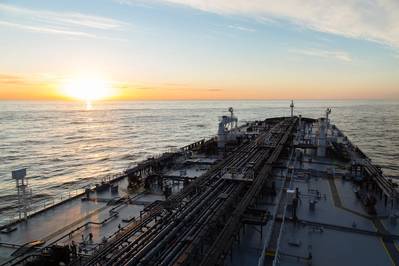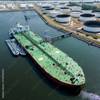Shadow Tanker Fleet Poses New Safety Challenges
Ongoing and new threats posed by the ripple effects of the Ukraine conflict will create challenges to the shipping sector over the next 12 months and beyond, according to insurer Allianz Global Corporate & Specialty SE’s (AGCS) Safety & Shipping Review 2023.
Every year AGCS analyzes reported shipping losses and casualties involving vessels over 100 gross tons. During 2022, 38 total losses were reported globally, compared with 59 a year earlier. This represents a 65% decline in annual losses over 10 years (109 in 2013).
“Shipping losses have sunk to the lowest number we have seen in the 12-year history of our annual study reflecting the positive impact safety programs, trainings, changes in ship design and regulation have had over time,” says Captain Rahul Khanna, Global Head of Marine Risk Consulting at AGCS. “While these results are gratifying, several clouds appear on the horizon. More than a year after Russia’s invasion of Ukraine, the growth of the shadow oil tanker fleet is the latest consequence to challenge shipowners, their crew and insurers.”
More than a year after Russia’s invasion of Ukraine, the threat of collateral damage on civilian shipping in or around the war risk area remains high. As of March 2023, around 300 seafarers and 40 vessels remained trapped in the region. The longer vessels are trapped, the higher the likely loss, says AGCS. Owners and operators have no access for maintenance or repairs while the passage of time means salvage values decline. The threat of collateral damage remains high, while harassment and diversion of shipping, electronic interference and cyber-attacks potential risks. Floating mines will pose a risk even after the war ends.
Oil sanctions have also resulted in Russia and its allies creating a shadow tanker fleet to transport and sell its oil. Estimates of its size vary – as many as 600 vessels. “The shadow fleet is more likely to be made up of older ships, operating under flags of convenience with lower maintenance standards,” explains Justus Heinrich, Global Product Leader Marine Hull at AGCS. “The increase in their number is a worrying development, threatening the world fleet and the environment. A major incident can cause loss of life as well as uninsured damage or pollution.”
He notes that in May 2023 an uninsured, unladen 1997-built tanker Pablo exploded in Southeast Asia, reportedly killing crew. Reports also indicate that there were at least eight groundings, collisions or near misses involving tankers carrying sanctioned oil products in 2022.
Asia a hotspot for total losses
Beyond the risks posed by the dark fleet, AGCCS reports that South China, Indochina, Indonesia, and the Philippines represent a global hotspot for total losses over the past year, and decade. The region accounted for one-in-five losses in 2022 (10) driven by factors including high levels of trade, congested ports, older fleets and extreme weather.
Globally, foundered (sunk/submerged) was the main cause of total losses across all vessel types (20), accounting for over 50%. Fire/explosion ranked as the second top cause of loss (8), vessel collision third (4). There were also over 200 fire incidents reported during 2022 (209) – the highest number for a decade, making this the third top cause of incidents globally, up 17% year-on-year.
Fire risks increasing
Several factors are increasing the risk of fires at sea. Decarbonization is leading to new types of cargo being transported on vessels, such as electric vehicles (EVs) and battery-powered goods. Potentially highly flammable lithium-ion (Li-ion) batteries pose a growing risk for container shipping and car carriers. This battery market is expected to grow by over 30% annually over the next decade.
At the same time, hazardous cargos are increasingly transported by increasingly larger vessels. Container carrying capacity has doubled in the last 20 years. The 10 largest container operators have more than 400 new vessels on order and the majority will be larger than the ships they replace. Consequently, the impact of fires is amplified, potentially resulting in more severe losses.















